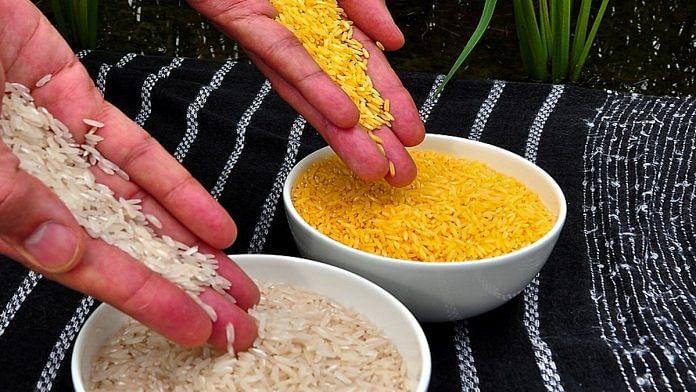‘Hidden hunger’
Potrykus and Beyer wanted to fight malnutrition — also known as “hidden hunger” — by genetically modifying rice in a way that the plant would accumulate beta-carotene in its grains. The human body converts beta-carotene into Vitamin A, which it needs to survive. This would help people in countries where rice is the most important source of carbohydrates meet their daily vitamin A requirement.
In 1999, the duo presented the first prototype of what would become known as Golden Rice — the rice accumulated beta-carotene in its grains due to genes transferred from daffodils.
The grains had a golden yellow hue — the first Golden Rice (GR) had become a reality. However, the amount of beta-carotene in the prototype was still too little to meet a person’s daily vitamin A requirement. The team then developed a second variant — ‘GR2’, which used genes from sweet corn. This led to a significant increase in the rice grains’ beta-carotene content compared to the prototype.
However, it was not until 2018 that all the data required to get the regulatory approval for growing the genetically modified product in the open field was compiled.
Last year, Philippines biosecurity authorities gave the green light for cultivation and consumption of Golden Rice, and cultivation of the crop began this year.
Golden Rice was controversial from the start. Its use was blocked, deferred and held up for years. Environmental groups fought tooth and nail against this and other genetically modified plants. Governments, too, refused to approve the cultivation of Golden Rice. Twenty-two years have passed between its development and large-scale cultivation.
Potrykus, now 89, said in a statement, “I’m very relieved to finally see cultivation commence after so many years of production delays. But I’m also very upset that the delays caused further suffering among millions of children.”
The plan is to exponentially expand the cultivation of GR2 to 17 other provinces of the Philippines. With more farmers being supplied with seeds, efficacy studies will determine the degree to which GR2 consumption prevents Vitamin A deficiency.
The aim is for the rice to go on sale locally once the research is complete.
Potrykus said that no further improvement of GR2 in terms of vitamin A is planned.
(Edited by V S Chandrasekar)



